Xin Shu
End to End Autoencoder MLP Framework for Sepsis Prediction
Aug 26, 2025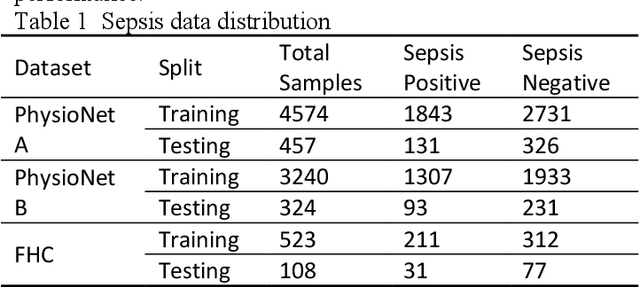
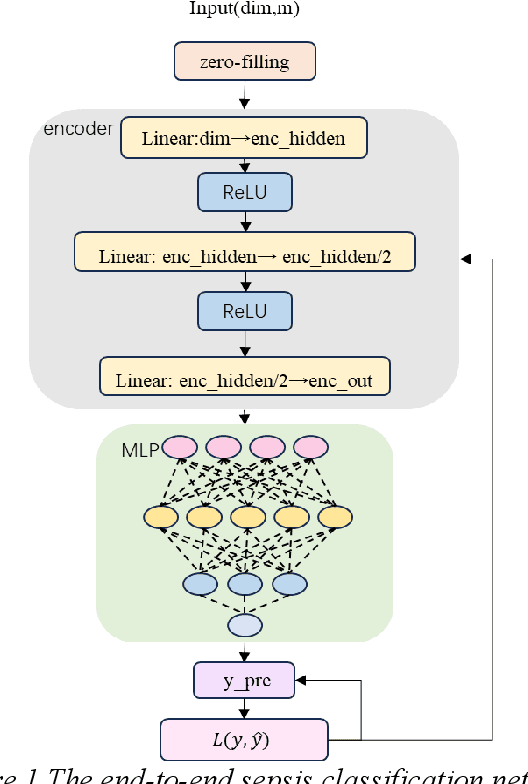
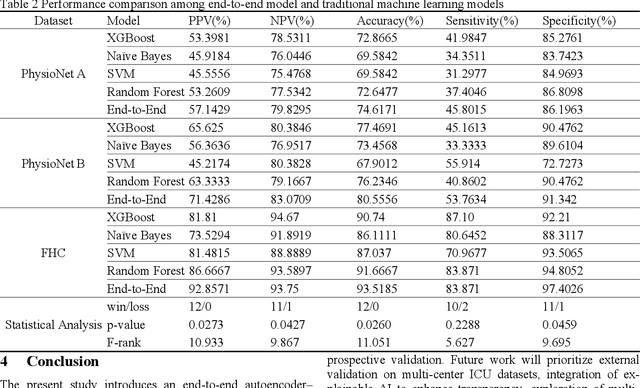
Abstract:Sepsis is a life threatening condition that requires timely detection in intensive care settings. Traditional machine learning approaches, including Naive Bayes, Support Vector Machine (SVM), Random Forest, and XGBoost, often rely on manual feature engineering and struggle with irregular, incomplete time-series data commonly present in electronic health records. We introduce an end-to-end deep learning framework integrating an unsupervised autoencoder for automatic feature extraction with a multilayer perceptron classifier for binary sepsis risk prediction. To enhance clinical applicability, we implement a customized down sampling strategy that extracts high information density segments during training and a non-overlapping dynamic sliding window mechanism for real-time inference. Preprocessed time series data are represented as fixed dimension vectors with explicit missingness indicators, mitigating bias and noise. We validate our approach on three ICU cohorts. Our end-to-end model achieves accuracies of 74.6 percent, 80.6 percent, and 93.5 percent, respectively, consistently outperforming traditional machine learning baselines. These results demonstrate the framework's superior robustness, generalizability, and clinical utility for early sepsis detection across heterogeneous ICU environments.
Identification of Probabilities of Causation: A Complete Characterization
May 21, 2025Abstract:Probabilities of causation are fundamental to modern decision-making. Pearl first introduced three binary probabilities of causation, and Tian and Pearl later derived tight bounds for them using Balke's linear programming. The theoretical characterization of probabilities of causation with multi-valued treatments and outcomes has remained unresolved for decades, limiting the scope of causality-based decision-making. In this paper, we resolve this foundational gap by proposing a complete set of representative probabilities of causation and proving that they are sufficient to characterize all possible probabilities of causation within the framework of Structural Causal Models (SCMs). We then formally derive tight bounds for these representative quantities using formal mathematical proofs. Finally, we demonstrate the practical relevance of our results through illustrative toy examples.
Enhancing Graph Neural Networks in Large-scale Traffic Incident Analysis with Concurrency Hypothesis
Nov 04, 2024Abstract:Despite recent progress in reducing road fatalities, the persistently high rate of traffic-related deaths highlights the necessity for improved safety interventions. Leveraging large-scale graph-based nationwide road network data across 49 states in the USA, our study first posits the Concurrency Hypothesis from intuitive observations, suggesting a significant likelihood of incidents occurring at neighboring nodes within the road network. To quantify this phenomenon, we introduce two novel metrics, Average Neighbor Crash Density (ANCD) and Average Neighbor Crash Continuity (ANCC), and subsequently employ them in statistical tests to validate the hypothesis rigorously. Building upon this foundation, we propose the Concurrency Prior (CP) method, a powerful approach designed to enhance the predictive capabilities of general Graph Neural Network (GNN) models in semi-supervised traffic incident prediction tasks. Our method allows GNNs to incorporate concurrent incident information, as mentioned in the hypothesis, via tokenization with negligible extra parameters. The extensive experiments, utilizing real-world data across states and cities in the USA, demonstrate that integrating CP into 12 state-of-the-art GNN architectures leads to significant improvements, with gains ranging from 3% to 13% in F1 score and 1.3% to 9% in AUC metrics. The code is publicly available at https://github.com/xiwenc1/Incident-GNN-CP.
Predicting total time to compress a video corpus using online inference systems
Oct 23, 2024Abstract:Predicting the computational cost of compressing/transcoding clips in a video corpus is important for resource management of cloud services and VOD (Video On Demand) providers. Currently, customers of cloud video services are unaware of the cost of transcoding their files until the task is completed. Previous work concentrated on predicting perclip compression time, and thus estimating the cost of video compression. In this work, we propose new Machine Learning (ML) systems which predict cost for the entire corpus instead. This is a more appropriate goal since users are not interested in per-clip cost but instead the cost for the whole corpus. In this work, we evaluate our systems with respect to two video codecs (x264, x265) and a novel high-quality video corpus. We find that the accuracy of aggregate time prediction for a video corpus more than two times better than using per-clip predictions. Furthermore, we present an online inference framework in which we update the ML models as files are processed. A consideration of video compute overhead and appropriate choice of ML predictor for each fraction of corpus completed yields a prediction error of less than 5%. This is approximately two times better than previous work which proposed generalised predictors.
Occlusion-Aware Detection and Re-ID Calibrated Network for Multi-Object Tracking
Aug 30, 2023Abstract:Multi-Object Tracking (MOT) is a crucial computer vision task that aims to predict the bounding boxes and identities of objects simultaneously. While state-of-the-art methods have made remarkable progress by jointly optimizing the multi-task problems of detection and Re-ID feature learning, yet, few approaches explore to tackle the occlusion issue, which is a long-standing challenge in the MOT field. Generally, occluded objects may hinder the detector from estimating the bounding boxes, resulting in fragmented trajectories. And the learned occluded Re-ID embeddings are less distinct since they contain interferer. To this end, we propose an occlusion-aware detection and Re-ID calibrated network for multi-object tracking, termed as ORCTrack. Specifically, we propose an Occlusion-Aware Attention (OAA) module in the detector that highlights the object features while suppressing the occluded background regions. OAA can serve as a modulator that enhances the detector for some potentially occluded objects. Furthermore, we design a Re-ID embedding matching block based on the optimal transport problem, which focuses on enhancing and calibrating the Re-ID representations through different adjacent frames complementarily. To validate the effectiveness of the proposed method, extensive experiments are conducted on two challenging VisDrone2021-MOT and KITTI benchmarks. Experimental evaluations demonstrate the superiority of our approach, which can achieve new state-of-the-art performance and enjoy high run-time efficiency.
High-performance real-world optical computing trained by in situ model-free optimization
Jul 22, 2023
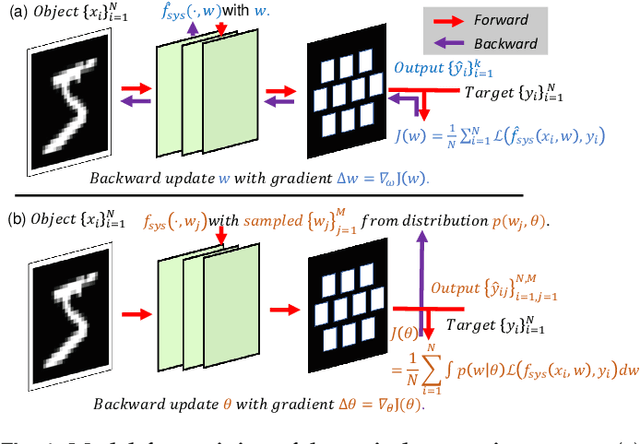
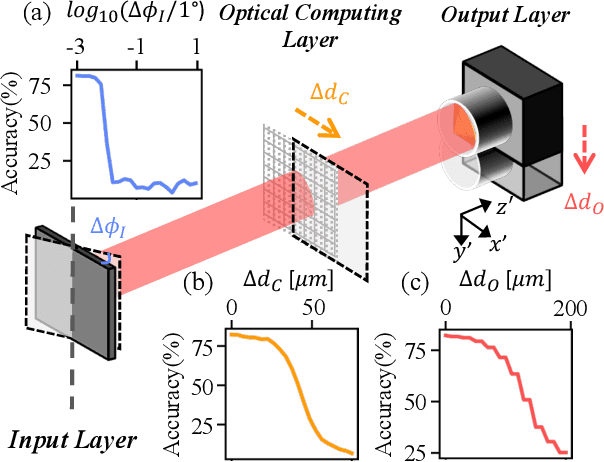
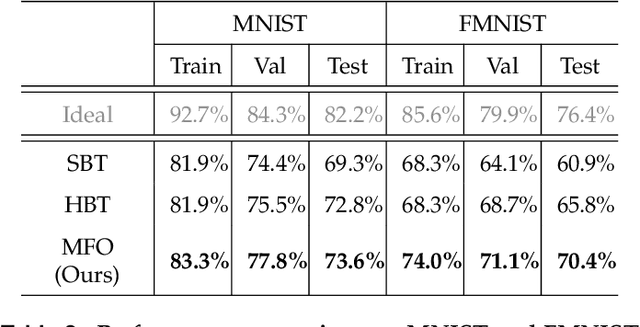
Abstract:Optical computing systems can provide high-speed and low-energy data processing but face deficiencies in computationally demanding training and simulation-to-reality gap. We propose a model-free solution for lightweight in situ optimization of optical computing systems based on the score gradient estimation algorithm. This approach treats the system as a black box and back-propagates loss directly to the optical weights' probabilistic distributions, hence circumventing the need for computation-heavy and biased system simulation. We demonstrate a superior classification accuracy on the MNIST and FMNIST datasets through experiments on a single-layer diffractive optical computing system. Furthermore, we show its potential for image-free and high-speed cell analysis. The inherent simplicity of our proposed method, combined with its low demand for computational resources, expedites the transition of optical computing from laboratory demonstrations to real-world applications.
Filling the gaps in video transcoder deployment in the cloud
Apr 17, 2023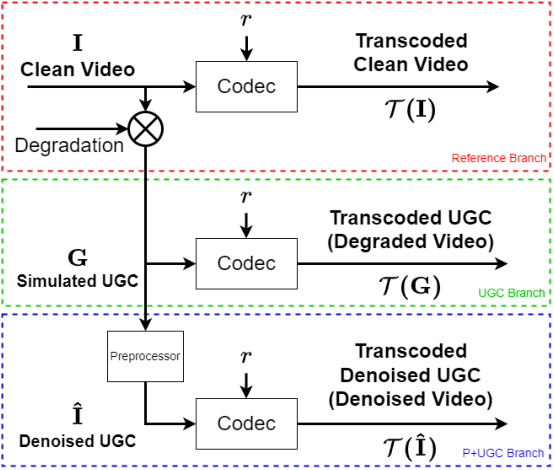
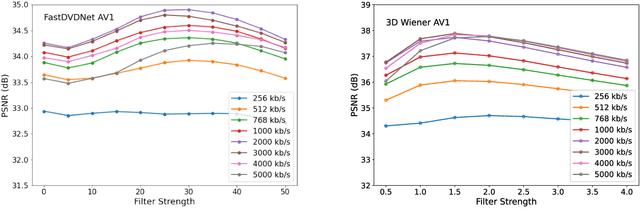

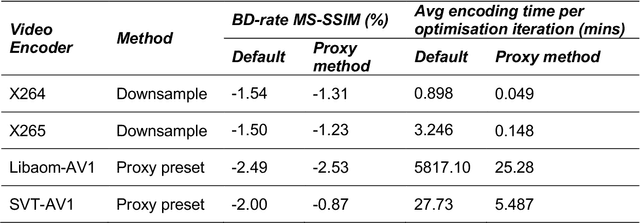
Abstract:Cloud-based deployment of content production and broadcast workflows has continued to disrupt the industry after the pandemic. The key tools required for unlocking cloud workflows, e.g., transcoding, metadata parsing, and streaming playback, are increasingly commoditized. However, as video traffic continues to increase there is a need to consider tools which offer opportunities for further bitrate/quality gains as well as those which facilitate cloud deployment. In this paper we consider preprocessing, rate/distortion optimisation and cloud cost prediction tools which are only just emerging from the research community. These tools are posed as part of the per-clip optimisation approach to transcoding which has been adopted by large streaming media processing entities but has yet to be made more widely available for the industry.
NAS-PRNet: Neural Architecture Search generated Phase Retrieval Net for Off-axis Quantitative Phase Imaging
Oct 25, 2022Abstract:Single neural networks have achieved simultaneous phase retrieval with aberration compensation and phase unwrapping in off-axis Quantitative Phase Imaging (QPI). However, when designing the phase retrieval neural network architecture, the trade-off between computation latency and accuracy has been largely neglected. Here, we propose Neural Architecture Search (NAS) generated Phase Retrieval Net (NAS-PRNet), which is an encoder-decoder style neural network, automatically found from a large neural network architecture search space. The NAS scheme in NAS-PRNet is modified from SparseMask, in which the learning of skip connections between the encoder and the decoder is formulated as a differentiable NAS problem, and the gradient decent is applied to efficiently search the optimal skip connections. Using MobileNet-v2 as the encoder and a synthesized loss that incorporates phase reconstruction and network sparsity losses, NAS-PRNet has realized fast and accurate phase retrieval of biological cells. When tested on a cell dataset, NAS-PRNet has achieved a Peak Signal-to-Noise Ratio (PSNR) of 36.1 dB, outperforming the widely used U-Net and original SparseMask-generated neural network. Notably, the computation latency of NAS-PRNet is only 31 ms which is 12 times less than U-Net. Moreover, the connectivity scheme in NAS-PRNet, identified from one off-axis QPI system, can be well fitted to another with different fringe patterns.
Cross-modal supervised learning for better acoustic representations
Jan 01, 2020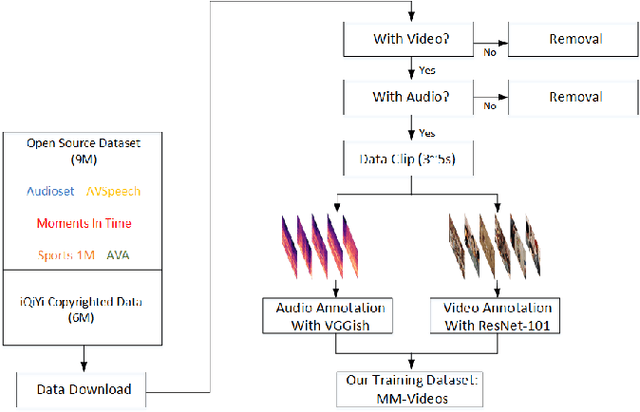
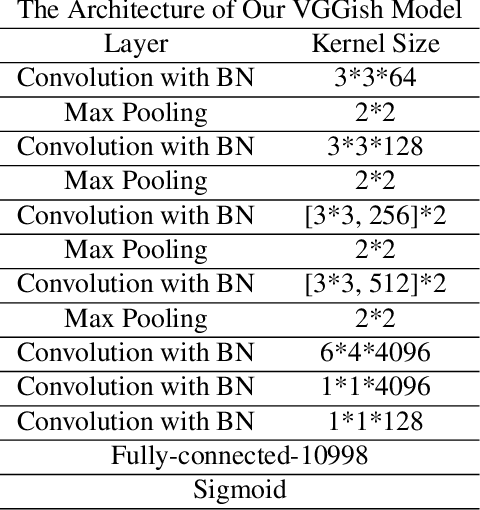
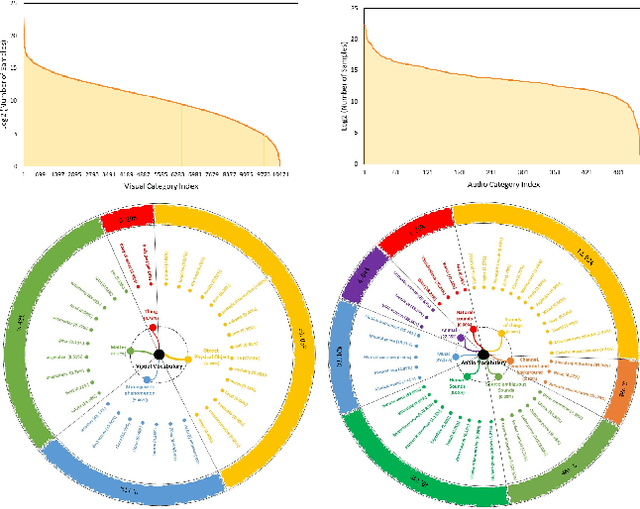
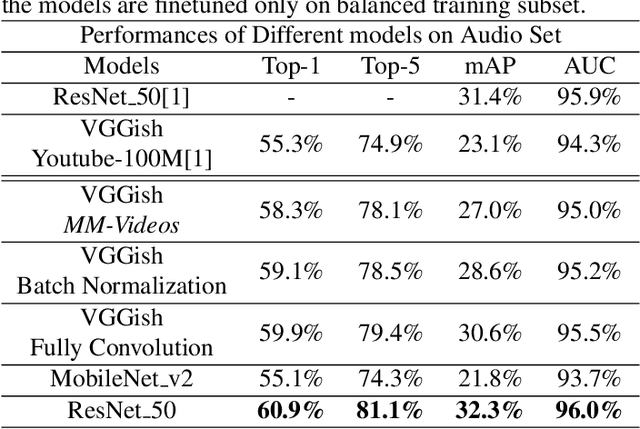
Abstract:Obtaining large-scale human-labeled datasets to train acoustic representation models is a very challenging task. On the contrary, we can easily collect data with machine-generated labels. In this work, we propose to exploit machine-generated labels to learn better acoustic representations, based on the synchronization between vision and audio. Firstly, we collect a large-scale video dataset with 15 million samples, which totally last 16,320 hours. Each video is 3 to 5 seconds in length and annotated automatically by publicly available visual and audio classification models. Secondly, we train various classical convolutional neural networks (CNNs) including VGGish, ResNet 50 and Mobilenet v2. We also make several improvements to VGGish and achieve better results. Finally, we transfer our models on three external standard benchmarks for audio classification task, and achieve significant performance boost over the state-of-the-art results. Models and codes are available at: https://github.com/Deeperjia/vgg-like-audio-models.
 Add to Chrome
Add to Chrome Add to Firefox
Add to Firefox Add to Edge
Add to Edge